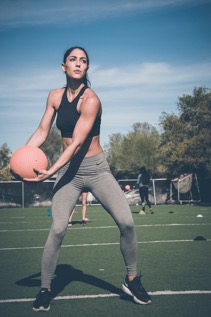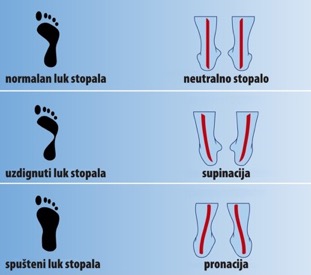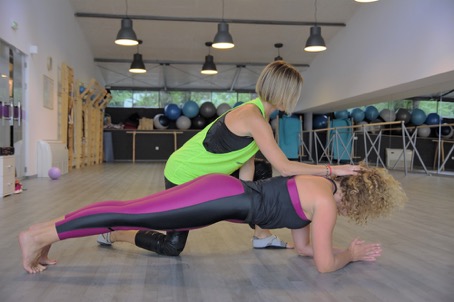Low back pain – Key steps in exercise rehabilitation
What is the most common cause of LBP (low back pain)?
The causes of pain in the lumbar spine may be different: injuries (automobile accident, fall, stroke), degenerative changes, tumors, due to sudden movements while standing up, rotation or lifting of cargo….
Dr. Stuart McGill (one of the leading experts in the field of biomechanics of the spine) considers that the wrong patterns of movements are the most common cause of spinal injury. If your client performs the movement correctly, it could also lift extremely large loads without the risk of injury. But if its patterns of motion are not correct and repeated daily, they increase the load on the surrounding tissues and gradually cause pain. It’s like a long and easy hitting with a hammer on your thumb. Soon the thumb even at the easiest pressure will react to the appearance of pain, or it will become hypersensitive. Thus, with the spine, the wrong movement that is constantly “hammering” along vertebra, burdens the surrounding tissues and makes the spine hypersensitive. Part of the rehabilitation program is to change the wrong movement patterns or “remove the hammer” to stop the tissue from being hypersensitive. Number of positions in which the client does not feel pain increases which allows us to introduce new exercises and movements in training. Rehabilitation exercises must be performed in positions that do not cause pain! If the pain is present, it usually leads to compensations which we must correct.

We are bringing several recommendations from Dr. Stuart McGill for successful rehabilitation. His team developed a 5-phase rehabilitation program, from identifying the false patterns of motion to athletic performances.
Five stages of rehabilitation
- Detection and correction of irregular patterns of movement
- Stability of the whole body and stability of joints (focus on hull stability)
- Increase in endurance
- Increase in power
- Development of speed, strength, agility
Not every client will pass all five phases. The first three phases are applied in rehabilitation and meet the needs of the average person who puts emphasis on the quality of everyday life. The next two steps are for those who conduct intensive training and for professional athletes.
It is important that you understand the objectives of each individual phase and when and in which order we move to the next. We’ll explain only the first three in more detail. Those interested in advanced athletic training we recommend the Mcgill’s book Ultimate Back Fitness and Performance (2006).
- Detection and correction of irregular patterns of movement
In the first phase of rehabilitation, the most important thing is for to recognize, and then learn the following:
- Difference between hip flexion and spine flexion
- Proper posture
- Proper breathing
- Proper squatting
Educating the person, while eliminating the cause of pain, is at this stage your most important task. The person must be aware that the way it performs everyday work, rests in front of the TV, exercises etc., will change significantly! It is up to you to study with the person all situations and positions in which he resides during the day. Focus on those positions and activities in which the person feels the biggest symptoms of LBP (low back pain) and start making changes. Changing the patterns of movement and irregular breathing techniques are your primary goal.
The importance of breathing with Stuart Mcgill also highlights Brett Jones, certified athletic trainer and strength and conditioning specialist. At seminars and workshops of Functional Movement Systems (FMS) he teaches that diaphragmatic breathing is a key and tool to fix movement. A group of authors in the book Muscles-Testing and Function with Posture and Pain, claims that irregular breathing is connected to different postural irregularities. They all agree that breathing helps to reduce stress, reduce pain, help regulate more body systems: nerve, endocrine, digestive, lymphatic, muscular, respiratory. What we often see is the wrong breathing pattern where air is inhaled through the mouth, thorax is elevated and pressure on the cervical spine increased. Thoracic breathing requires more energy and is less effective than diaphragmatic breathing. Less air comes into the lungs, so the person must breathe rapidly. Diaphragmatic breathing affects the trunk stability and helps repair the movement pattern. Test your client, and if there is a wrong breathing pattern, changing it is mandatory in the first phase of the rehabilitation!
We’ve already pointed out that your client’s education is very important. You need a client to learn what are the hip and spine flexion, how to perform squat (of course by respecting possible limitations, e.g. poor mobility of the hip or thoracic part). You should raise awareness of body segments and their positions in space to correct postural abnormalities (position of the shoulder blades, pelvis, how their weight is distributed on the feet…)

The person will become aware of the difference between hip and spine flexion and will be able to perform it properly if you demonstrate it first. It is desirable that you have a mirror in the room. As a prop stick has proven to be excellent – inexpensive and gives the client good feedback on the position of the spine. You can also use photos with different positions of the spine that can help in recognizing movements of the body parts. Use the knowledge a person has learned in his daily activities (e.g. what is the position of the spine when the load needs to be lifted, how to stand from a chair or do house chores).
- Stability of the whole body and stability of joints (focus on trunk stability)
In the second phase, the emphasis is on stability not only in exercises during training, but to convey it, or apply it in the activities of everyday life. Every movement begins with stabilization of all segments of the body. Good stabilization is a prerequisite for balance, safety and movement effectiveness. If the trunk is stable, the extremities can move without restriction and make it easier to produce the force required to perform the movement. Start from the basic position of the body, ask the client to maintain the neutral position of the trunk in the initial position (e.g. standing position, four-legged position) and perform movement in the hip, shoulder…

Determining training volume in rehabilitation program is sometimes a problem. McGill points out that often in practice it occurs that the load is not appropriate for the client’s condition and that trainer should be cautious. Excessive or insufficient load will not yield results. A well-dosed load will result in a strengthening of the trunk, but low load can weaken it. Expecting progress from week to week is not realistic. Your client will have good and bad days, but the important thing is that there is a slight upward trajectory. When it comes to progress, we can increase the daily challenges for the client. These challenges will be different for each person, depending on her lifestyle, age, gender, fitness, motivation, body composition… In the second phase of rehabilitation your client should repeat the stabilization exercises to establish automatism, so that the learned stabilization model integrates into the activities of everyday life.
In practice, often the first and second stages of rehabilitation are intertwined, all depending on the individual needs of your client.
- Increase in endurance
Muscular endurance is essential for achieving a stabilization model. In the scientific work of Luoto and colleagues (1995) they argued that muscular endurance has a protective role and people who have greater muscle endurance rarely have spinal damage. Most often, the endurance of the trunk muscles we build in a way that we retain a certain position relatively short, no longer than 7-8 s (static endurance). Longer retention of position increases the oxygen loss in the trunk muscles. McGill and associates (2006) have found that short breaks or relaxation between repetitions restores oxygen to the muscles. So instead of holding in one position, increase the number of repetitions. In his book Low Back Disorders McGill defines the norms for endurance of flexors, extensors and lateroflexors. These values will help you to determine the overall muscle deficit and the relationship e.g. between endurance of front and back muscles of the trunk.
We use Russian reverse pyramid model for building endurance. The idea is to work without getting tired. We will explain on the example of side-bridge exercises with 5 repetitions.
The training would look like this:
- 5 repetition of side-bridge on the right side
- 5 repetitions side-bridge on the left side
- Rest
- 4 repetition of side-bridge on the right side
- 4 repetitions side-bridge on the left side
- Rest
- 3 repetition of side-bridge on the right side
- 3 Repetition side-bridge on the left side
This kind of training helps to keep the performance technique good, which should be the main focus for all people and especially those in rehabilitation program. In the third phase of rehabilitation, forget about the principle of work that we often see in body-Building where the emphasis is on muscle hypertrophy. It is not desirable for this model to be repainted in the rehabilitation program.
Conclusion: in the rehabilitation of persons with LBP, the emphasis should be put on changing the wrong patterns of movement, diaphragmatic breathing, functional movement, muscle endurance development and transfer of learned techniques in the activities of everyday life. Do not repaint the principle by which elite athletes practice – higher, faster, stronger, where the emphasis is on the quality of sports performance and athletes usually do not take into account the possible health risks. Be patient, follow the progress and gradually increase the load. Remember that the first three phases are applied in the rehabilitation of the average person and put emphasis on the quality of everyday life. For those who work with advanced amateurs and athletes, we recommend Mcgill’s book Ultimate Back Fitness and Performance (2006).
REFERENCE:
- Kendall, F.P. i suradnici (2005). Muscles testing and function with posture and pain
- Kisner, Carol and Colby, Lynn Allen (2007). Therapeutic Exercise – Foundations and Techniques
- McGill Stuart (2007). Low back disorders
- Noris, C. M., (2008). Back stability
- Paušić, J. (2013). Kineziterapija koštano-mišićnog sustava (priručnik)
- Paušić, J. (2014). Planiranje i programiranje kineziterapijskog postupka (priručnik)
- https://www.ncbi.nlm.nih.gov/pubmed/11415574
- https://www.functionalmovement.com/Articles/769/how_your_breathing_relates_to_your_movement
- https://www.functionalmovement.com/articles/773/thoracic_spine_an_immovable_cage_or_a_mobile_spring




